Loved by few and hated by many — it’s easy to see why that’s the case with Mazda’s quirky quad-coupe. As far as insurance companies are concerned, it’s a fuel-efficient 1.3-liter four-door sedan.
But little do they know that the rear doors are basically a gimmick and that it’s powered by a gas-guzzling rotary engine that spits flames. This is why the RX8 manages to punch above its weight and easily outclasses sports cars 4 times its price.
Mazda got the recipe right with this one. It’s as sophisticated as the ‘67 Cosmo; has the weight distribution of a Miata, and the driving dynamics of its beloved predecessor: the RX7.
That said, it’s hilariously unreliable, impractical to live with, and a chore to drive daily. All of which you’d forgive right after you watch the tacho needle cross 7,000 rpm.
Despite the bad publicity it gets, the RX8 is a fantastic tuner car with huge potential for aftermarket upgrades. Though it didn’t quite reach the iconic status of its predecessor it still is one hell of a car to own and drive.
Stick around as we dive deep into what this car is all about, what it’s like to live with, specifications, reliability, and pretty much everything you need to know. Find it all in this RX8 buyers guide.
History and Development
Rotary engines were the cornerstone of Mazda’s success back in the day. Their relentless pursuit of perfecting this unconventional engine configuration earned them the love and respect of countless enthusiasts across the globe.
This engine style has been a part of Mazda’s sportscar lineup from the early 60s when it was installed in the very first Cosmo prototype, all the way to the end of the RX8’s production run in 2012.
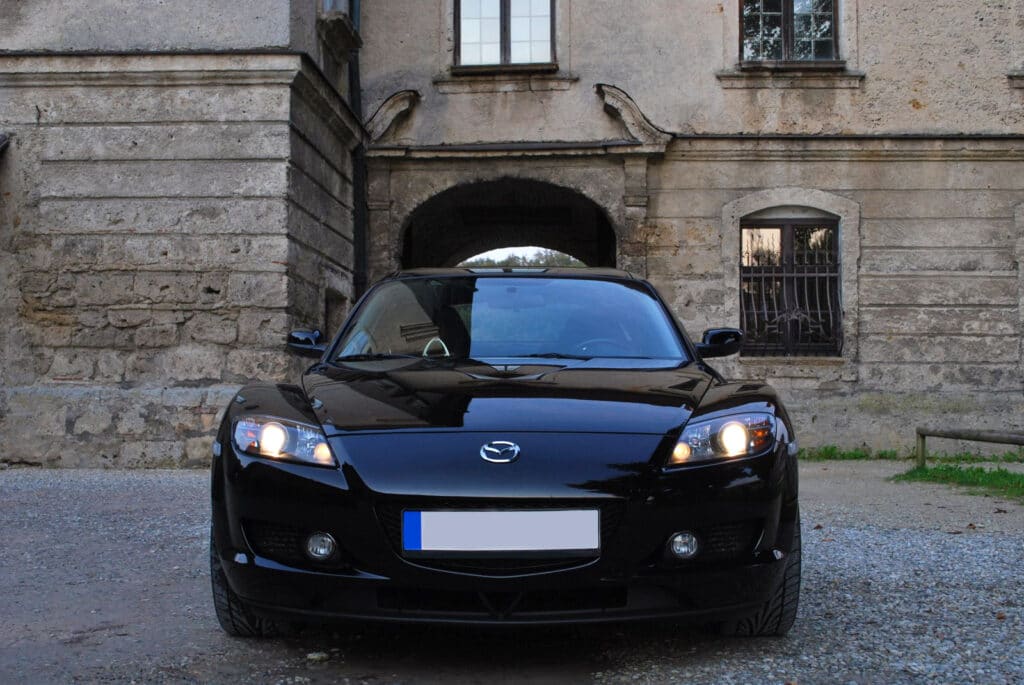
During this time, rotary engines powered many vehicles — everything from obscure JDM cars to sports prototype champions. The most notable ones included the R100 and the entire RX series, especially the RX-7, which is what the RX8 is based on.
Mazda unveiled 3 generations of the RX-7 in North America between 1978 and 1991 when it was taken off dealership floors — a decision they had to take due to a declining interest in sports coupes.
It was not until the late 1990s and early 2000s that interest in Japanese sports cars returned. When it did, Mazda wanted to cash in on it.
But the only production car they had that fit the bill was the Miata which wasn’t rotary-powered, and it wasn’t quite up there with the competition in terms of outright performance.
Don’t get us wrong, properly modified Miatas can outhandle most sports cars, but they’re just not fast enough.
So they turned to the 1995 RX-01 concept car on which they had pulled the plug due to their poor financial condition.
Even though the development of the RX-01 had stopped, a team of passionate engineers carried on with the development of the 13B-MSP as a skunkworks project.

Their version of the RX-01 was built on an elongated MX5 chassis. Eventually, it caught the attention of upper management and they decided to roll with it.
Unlike the uncompromising sports car that the RX-7 was, the RX-01 was designed to be simple, inexpensive, and fun to drive.
Development of the 13B-MSP engine then continued, but this time it was heavily influenced by Ford as they were the ones keeping the lights on at Mazda.
The development eventually gave rise to the Renesis platform and the RX-Evolv concept car as a result. That’s when it started taking shape and resembling the RX8 as we know it today.
Ikuo Maeda, the son of Matasaburo Maeda who was the lead designer of the original RX-7, continued the legacy by fulfilling the responsibility as lead designer for the RX8 project.

He got the project officially approved under the condition that it should have 4 doors. In 2001, the first reference exhibit of the RX8 was unveiled — a front-mid engine rear-wheel-drive quad coupe that would go on to become the talk of the 2000s.
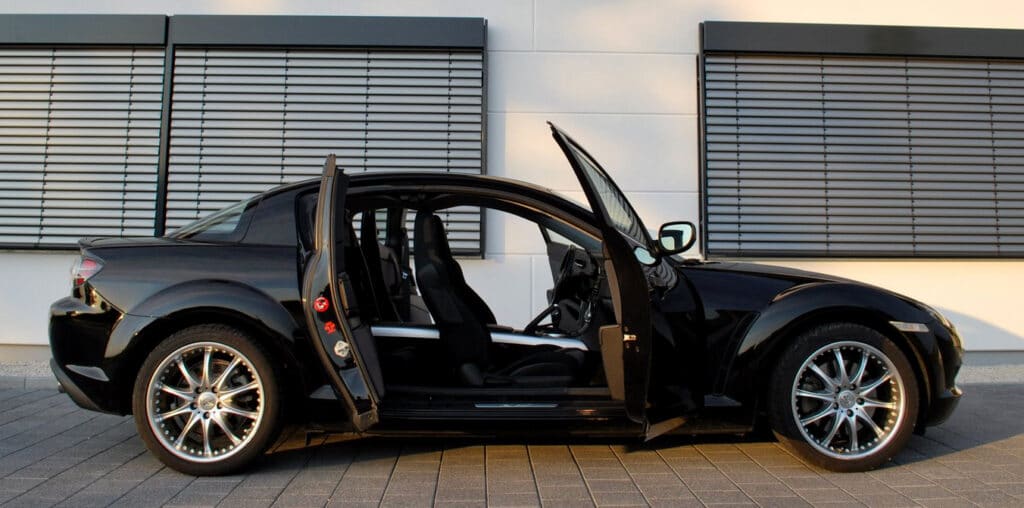
Mazda RX8 Tech Specs and General Info
The Series 1 RX8 debuted in the U.S. in 2004 and was sold internationally between 2002 and 2007.
It came in a gazillion different trim levels and several limited models with an option to choose between 4-port or 6-port rotary engines. Manual or automatic options were available depending on the trim and engine layout.
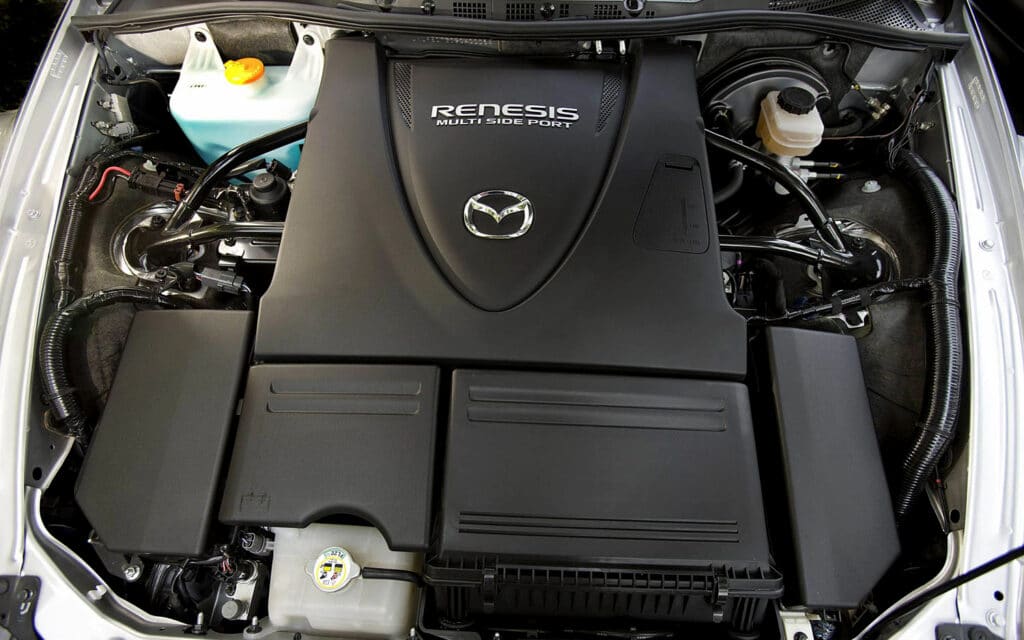
To clarify, 4-port and 6-port refer to the number of intake ports on the side of the engine housing. That’s 1 additional port per rotor, considering how it’s a 2 rotor engine. More ports mean more air can flow into the engine at high rpm.
For instance, 4-port engines can’t get as much of an intake charge as they need beyond 7500 rpm, but a 6-port engine can.
But on the flip side, high airflow at high rpm results in lower airflow optimization at low rpm. This means the 4-port engine will actually have more low-end torque.
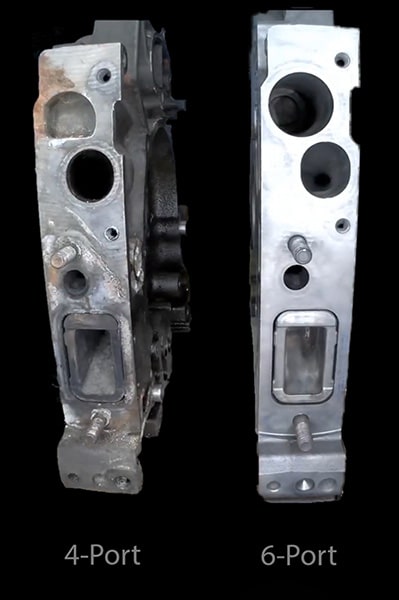
In the spec sheet below, you can examine the power figures and other features of both the Series 1 and Series 2; 4-port and 6-port engine options, along with some other specs of the RX8.
| Engine Code | 13B-MSP |
| Engine Sub-category | Renesis 4 and 6 port Renesis II 4 and 6 port |
| Displacement | Series 1: 1304 cc Series 2: 1308 cc |
| Layout | Front-mid engine rear-wheel drive |
Power | Renesis 4 port: 192 hp @ 7,000 rpm Renesis 6 port: 231 hp @ 8,200 rpm Renesis II 4 port: 212 hp @ 7,500 rpm Renesis II 6 port: 232 hp @ 8,500 rpm |
Torque | Renesis 4 port: 146 lb-ft @ 5,000 rpm Renesis 6 port: 156 lb-ft @ 5,500 rpm Renesis II 4 port: 159 lb-ft @ 5,500 rpm Renesis II 6 port: 159 lb-ft @ 5,500 rpm |
| Number of Rotors | 2 |
Transmission | 4-speed auto 5-speed manual 6-speed manual 6-speed semi-auto |
| Weight | 2885 lbs to 3051 lbs |
| 0-60 mph | 5.7 to 6.4 seconds |
| Top Speed | 145 – 168 mph |
Series 1 vs Series 2
In 2008, the RX8 received a significant makeover. Even though Series 1 and Series 2 RX8s have similar straight-line performance and aesthetics, internally, Mazda made a lot of changes that improved the reliability of the Series 2.
The Series 2 mid-cycle refresh got a more rigid body through the addition of a trapezoidal shock tower brace. The rear suspension geometry was enhanced, and the final-drive-gear ratio went from 4.444 to 4.777 on manual RX8s for better acceleration.
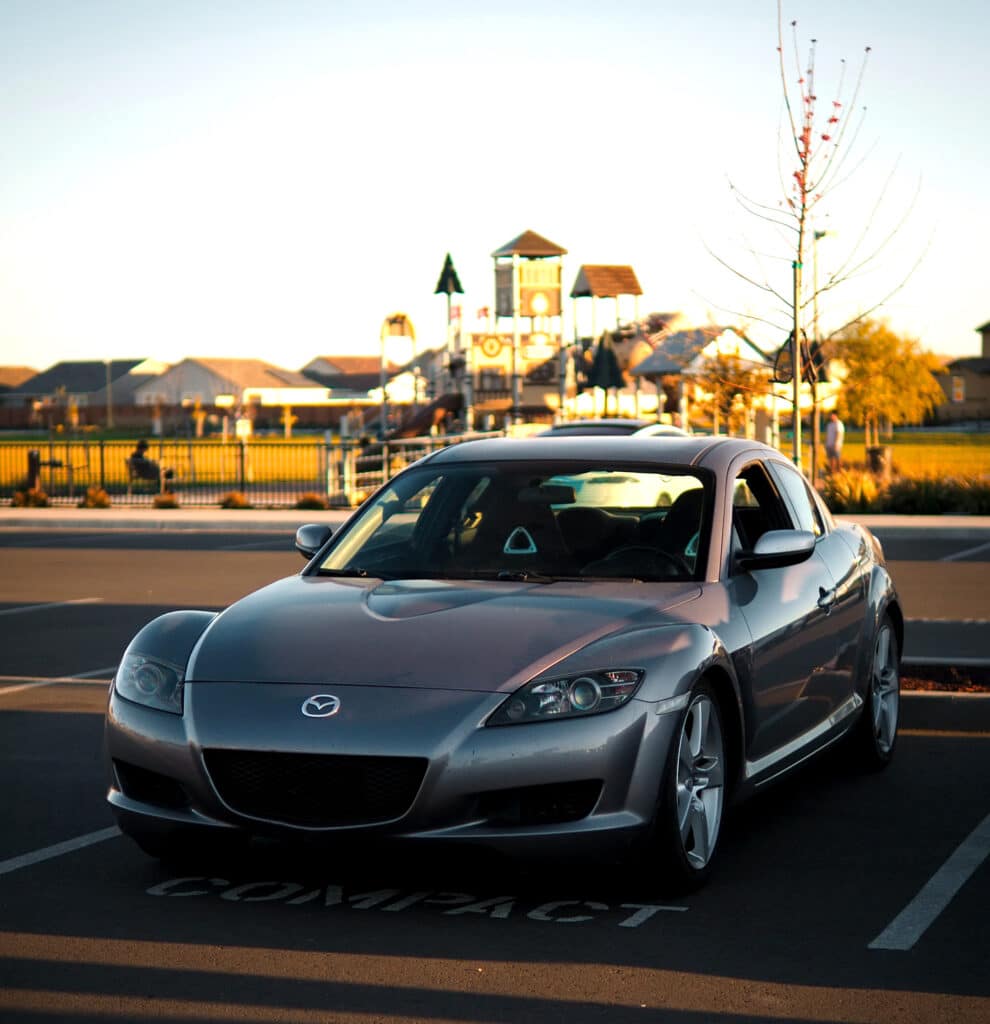
The Series 2 also got a refreshed engine — the Renesis II which was seen in 2009+ RX8s. It included a third oil injection port in each rotor housing. This meant the Renesis II had a total of 6 lubrication injectors which ensured the apex seals lasted longer.
It even got a new engine oil pump with a higher pressure rating.
Moving on to changes made outside the engine, the Series 2 got new a catalytic converter which was very much needed. The updated catalytic converter design allowed for reduced clogging and fewer instances of exhaust stream overheating.
Effectively, the Series 2 was slightly quicker, had better throttle response, and most importantly, it was known to be more reliable.
Out of all the RX8s ever made, 2009+ Series 2 cars reported fewer instances of engine flooding and other common rotary niggles.
Fun fact: Wondering how many RX8s were built? In total, 35,354 were sold in the United States, while 192,094 units were made and sold worldwide.
RX8 Reliability Concerns
The Mazda RX8 gets a bad rap for being unreliable, extremely high-maintenance, and unpredictable. This is all warranted, but there’s a lot more to it than meets the eye.
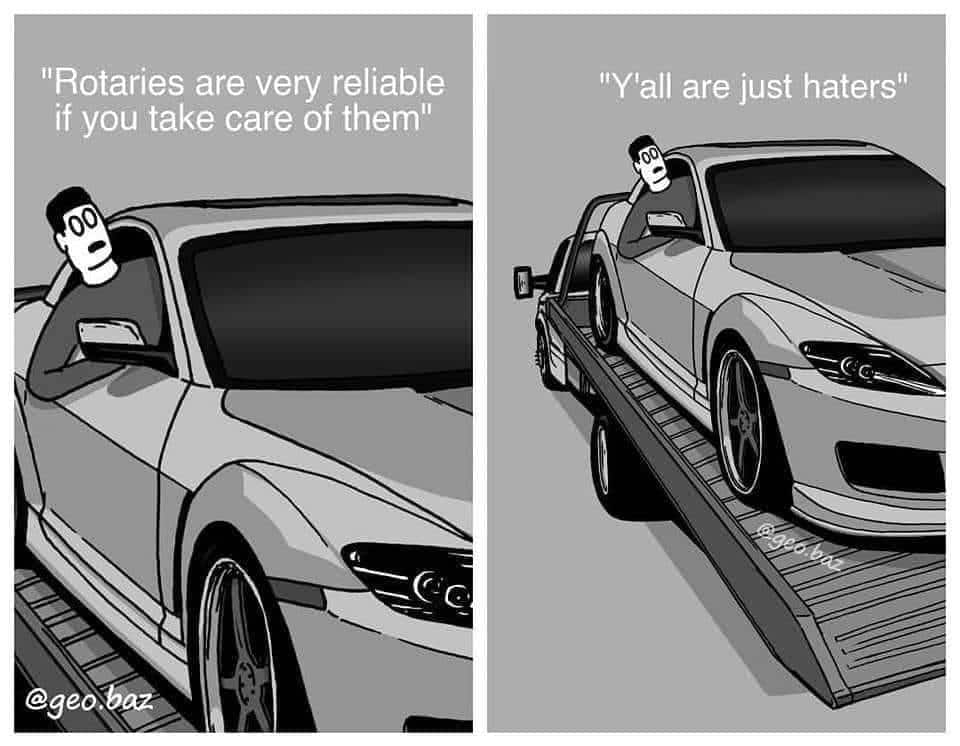
Whether or not this is a dealbreaker comes down to your definition of a reliable car.
If all you want to do is change your RX8’s engine oil once in a while, perform the occasional DIY repair job like changing spark plugs, and leave the rest to a technician, then the RX8 is not the car for you.
But if you’re a hobbyist, genuinely passionate about cars, and experience joy in taking up challenging things that reward you, then this car might be right up your alley. It’s a rabbit hole that once you enter, you’re in for good.
The thing about rotary engines is that they need to be treated like rotary engines. The 13B that comes in a Mazda RX8 requires the similar love and attention that a 12A, or other rotary engine deserves.
They’re a different breed, and so they require you to do things a bit differently. That doesn’t necessarily indicate that they’re poorly designed.
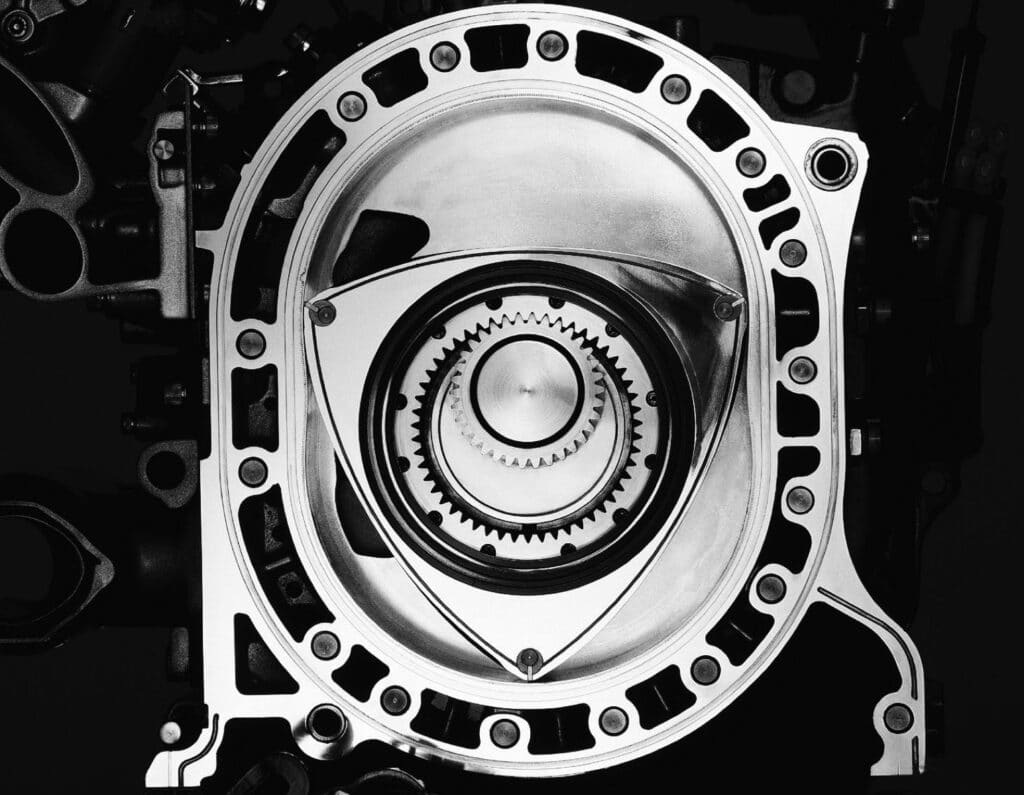
If that was the case, then the RX8 wouldn’t have garnered as much love and attention as it did.
You’ll be surprised to learn that despite its poor reputation in terms of RX8 reliability, the chassis itself and it’s Renesis engine won several awards. Some of these include:
- 2003 International Engine of the Year award
- Best New Engine of the Year 2003
- Best Engine between 2.5 and 3.0 L
- Japanese Car of the Year
- Australia Wheels Car of the Year
- Singapore’s Car of the Year
- US Best Sports Car
- UK Best Sports Car
But here’s the thing. Most people and even technicians are only used to piston engines. Few RX8 buyers truly know how to keep their rotary engines in good shape. And rotary technicians who will guide you properly are hard to come across.
Put all of this together, and what you’re going to see is a very high number of broken-down RX8s or any rotary-powered car for that matter.
Even some of Mazda’s own dealerships misdiagnosed the engine failure error issues with early Series 1 RX8s. This brings us to the next topic.
Common Problems
To mitigate the inevitable problems you’ll face with the RX8, you need to familiarize yourself with them first.
Only then will you be able to truly enjoy this car and get the most out of it. But no matter what you do, chances are that the engine will give in at about 80,000 miles.
Below we’ve listed some of the most common problems that plague the 13B-MSP Renesis engine and the RX8 in general.
Worn Out Apex Seals
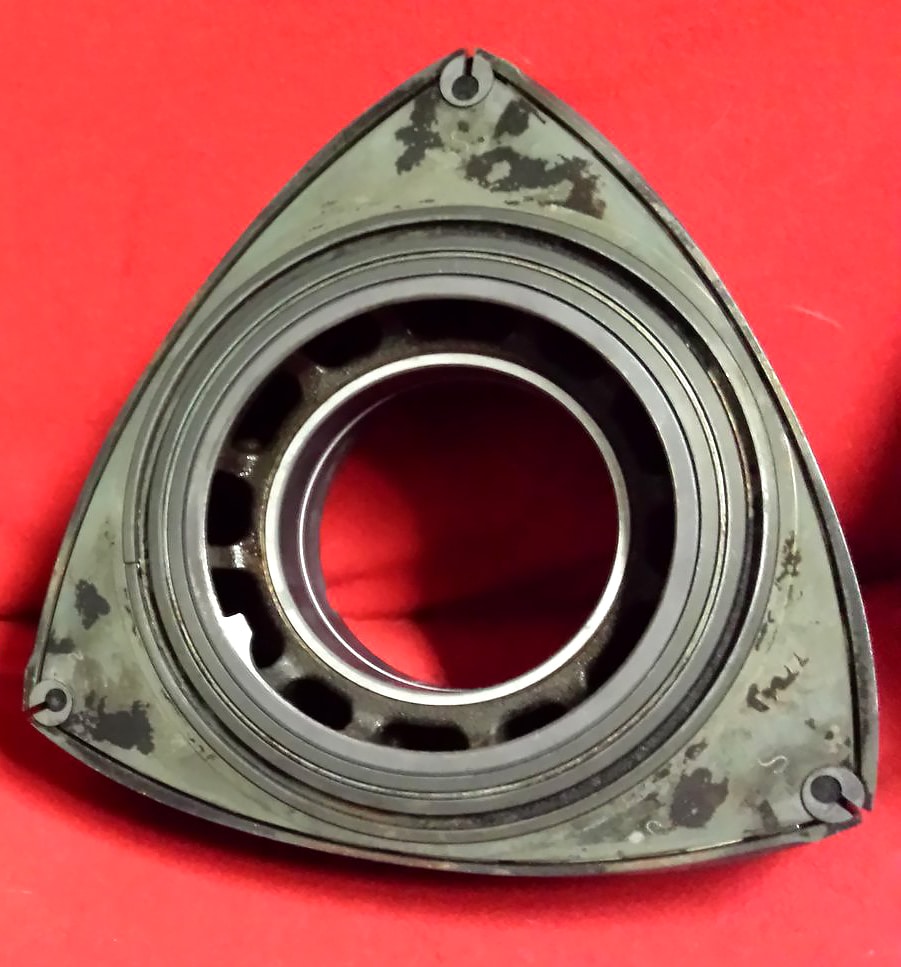
Right off the bat, worn-out apex seals is the most dreaded rotary failure, period. This is a common problem with all RX8s, no matter the year or model.
Apex seals do the job of sealing the housing, creating compression, and ensuring that the intake and combustion cycles can take place effectively.
They have to undergo tremendous pressure, friction, and temperature changes as they constantly rub against the inner housing.

Over time, these seals degrade which can lead to loss of compression which snowballs into several other problems. This can be avoided, or rather delayed, by consistently keeping the oil levels topped up and mixing two-stroke oil along with your fuel.
Flooding
When there’s too much fuel in the combustion chamber, and very little air, the engine is said to be flooded. This typically happens when you try to start the engine but it doesn’t. The more you crank, the more the ECU keeps pumping fuel.
The fuel then soaks the spark plugs and sloshes around in the housing, making matters worse.
This is why you’ll hear about RX8 owners being anal about never turning the ignition off too soon after a cold start. Because if that’s done, the engine will most likely flood.
This can be easily avoided. Most instances of flooded Renesis engines can be attributed to:
- starter motors in need of replacement,
- ignition coils,
- spark plugs,
- spark plug wires,
- low battery, and
- low compression.
This issue can be avoided by simply replacing your ignition coils and spark plugs every 30,000 miles or sooner. Especially if you’re starting to notice symptoms of bad spark plugs, wires, or low battery.

The most common fix to get a flooded RX8 running again is to hook its battery up to another car’s battery while it’s running. Then floor the gas pedal and crank the motor in 5 to 10-second intervals.
Repeat this process about 10 times, take your foot off the gas pedal, then try to start it normally.
Oil Burning
This isn’t a problem by any means, but it is worth mentioning. When piston engines burn oil, it may be cause for concern. But the same cannot be said for rotary engines.
RX8s burn oil by design. You’d have bigger problems to deal with if your Renesis engine wasn’t burning enough oil.
Because all the engine seals are located inside the combustion chamber, there needs to be a way to lubricate them. Otherwise, they’ll wear out in no time and the engine will lose compression.
The stock oil metering pump handles this duty to a great extent, but you can always mix two-stroke engine oil with your fuel so that your injectors double up as a lubrication system. On average, expect to burn a quart of oil every 1,000 miles.
Worn Out Ignition Coils
Keeping your RX8s ignition system as healthy as possible is one of the best things you can do to ensure it runs the way it’s supposed to.
Ignition coils are a consumable part — if they fail and aren’t replaced in time, they can slowly eat away at your engine and cause significant power loss.

Ignition coils don’t just conk off when they stop working. They get weaker and weaker over time which can cause your engine to run too rich.
The excess fuel then gets dumped into the exhaust stream where it ignites and causes the catalytic converter to crap out.
These coils are a consumable item and they should ideally be replaced every 30,000 miles. We recommend installing upgraded aftermarket coils.
Poor Emissions and Gas Mileage

In terms of fuel economy, the first-generation RX8 engine is rated at 26 mpg, while the second-generation R3 model barely reduces consumption to 24 mpg.
A well-maintained RX8, free of wear and tear and catalytic converter problems, will still have high emissions. Standard emissions values for an RX8 of any year are between 267 and 284 g/km of CO2.
If you want to opt for the relatively fuel-efficient R3 version, you will be surprised to learn that it emits almost 299 g/km of CO2.
Keeping Your Rotary Engine Reliable
To keep your RX8 reliable, you’re going to have to follow recommended guidelines for proper maintenance and care. This is something you need to do to keep any car reliable, but even more so with a rotary.

Piston engines can be quite forgiving, but rotary engines do not take kindly to neglect — they will burn a hole in your pocket and cause a lot of frustration if you don’t maintain them properly.
Optimal cooling, lubrication, and ignition system health are key to keeping your Renesis engine reliable. Here are some of the things you can do:
- Replace worn-out hoses, and address coolant leaks with urgency.
- Stop your car immediately if it starts to run hot.
- Use premix; the oil metering pump can only do so much. Ideally 0.5 oz per gallon of gas. Avoid using premix right before an emissions test.
- Upgrade your cooling system and install a bigger aftermarket radiator and other cooling mods.
- Consider upgrading to an aftermarket ignition coil.
Since we’re on the subject of mods, in case you end up going in for a rebuild, installing lighter, aftermarket billet aluminum rotors are an option.
If weight savings and performance are a priority, consider buying an aftermarket exhaust system for your RX8.
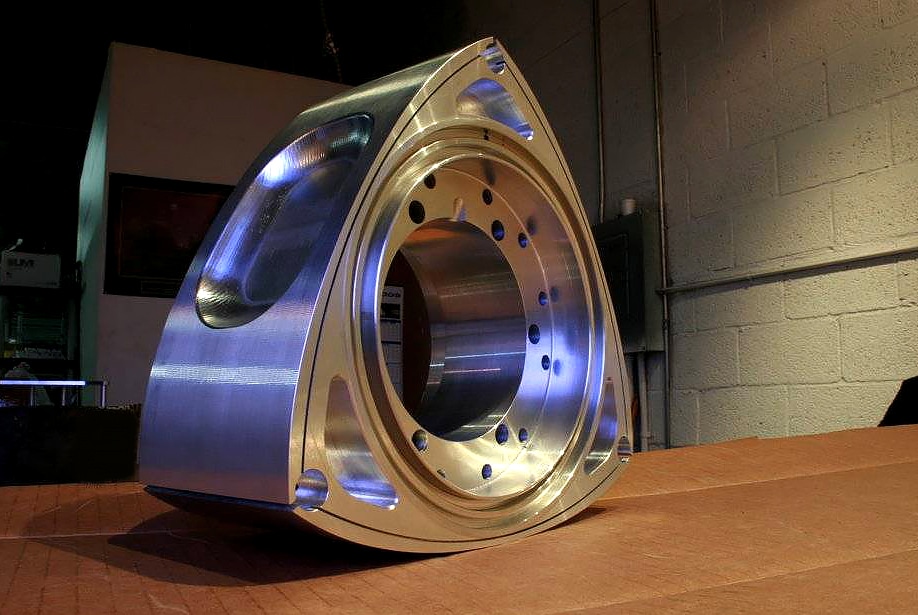
Which Years To Avoid?
Early Series 1s from 2004 and 2005 had too many instances of abrupt engine failure which caused a lot of bad press for the RX8.
The problem was with ECU flashes on the early engines; they weren’t injecting enough oil into the engine which led to premature wear of sensitive components.
Weak ignition coils were another glaring problem that was overlooked. The two combined wreaked havoc with early RX8 engines.
The MSP-16 ECU update improved things greatly, but it did not solve the problem. RX8 owners and dealers tried troubleshooting the issue but nothing seemed to work.
Eventually, Mazda dealerships started recommending engine replacements, which many buyers went ahead with.
It wasn’t until years later that dealerships spotted the misdiagnosis and realized just how critical the weak ignition coil issue actually was. This meant that many perfectly good engines had likely been replaced unnecessarily.
To fix this, Mazda initiated a recall where they rebuilt the faulty engines at their remanufacturing plants. The quality control was not great — and a lot of the original rebuilt engines had poor seal clearances.
Many of the rebuilt units sent to customers turned out to be worse than what they already had.
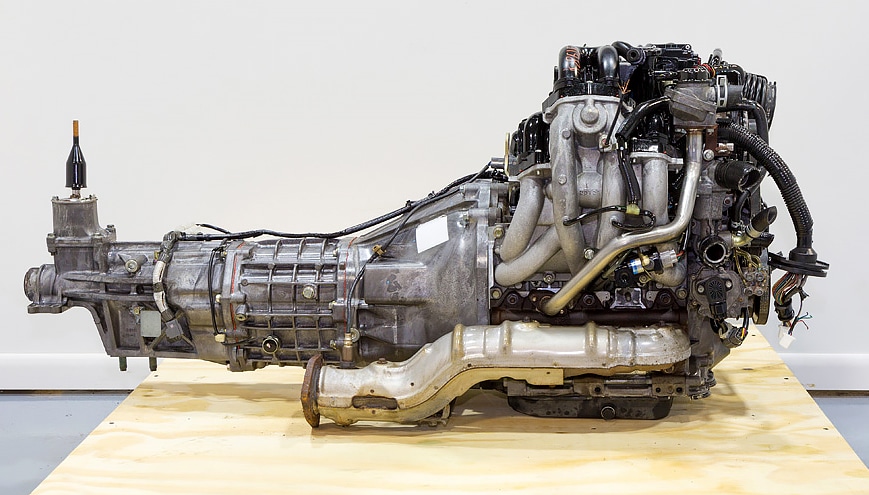
However, the reman facilities were eventually revamped and quality control was significantly improved post-2006.
With all that in mind, if you’re on the lookout for a used RX8, it’s a safe bet to steer clear of pre-2006 models.
Unless you find an 04, 05, or 06 with an engine replacement that took place in Q4 2006 or later — if that’s the case, then the engine replacement is actually a positive sign because the reman quality was improved by then.
But if you’re certain that the RX8 you’re looking at has a remanufactured engine from before 2006, or that it’s still running the original ECU flash, then don’t buy it. 2002 to 2005 aren’t the best years for this car.
The MSP-16 update took place in early 2005. You can confirm whether or not the ECU update was made on any specific RX8 by getting in touch with Mazda North America and giving them your VIN details.
Many 2004 engines are in good shape. 2005s have a much lower failure rate, and anything after 2006 is generally safe. We recommend looking into 2009+ Series 2 RX8s.
Always be sure to use an engine compression tester before even considering your purchase.
Concluding Summary

If you ignore the outlandish nature of the RX8, forget that it has a quirky Dorito engine, and simply see it for what it is, what you’ll see is a fantastic car that’s perfectly capable of making you grin ear to ear each time you chuck it into a corner.
A car that will make you want to stay as close to the redline as possible, without fear. Living with a rotary-powered car is quite an experience.
And as rewarding as it is, it comes with its fair share of responsibilities. Fulfill those responsibilities, and the car will reward you endlessly.
Rumor has it that Mazda will resurrect the rotary engine in hybrid form, but more on that in another article.
What are your thoughts on the RX8? Do you think LS-swapping a rotary-powered car is an abomination? Let us know in the comments below!


